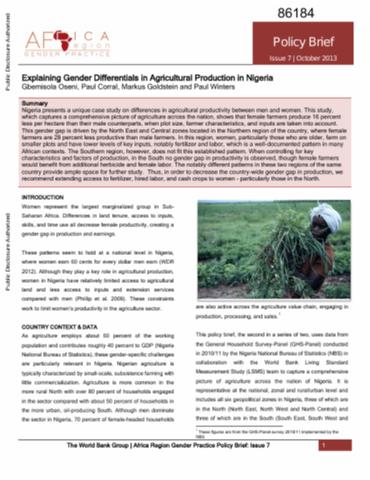Resource information
Nigeria presents a unique case study on differences in agricultural productivity between men and women. This study, which captures a comprehensive picture of agriculture across the nation, shows that female farmers produce 16 percent less per hectare than their male counterparts, when plot size, farmer characteristics, and inputs are taken into account. This gender gap is driven by the North East and Central zones located in the Northern region of the country, where female farmers are 28 percent less productive than male farmers. In this region, women, particularly those who are older, farm on smaller plots and have lower levels of key inputs, notably fertilizer and labor, which is a well-documented pattern in many African contexts. The Southern region, however, does not fit this established pattern. When controlling for key characteristics and factors of production, in the South no gender gap in productivity is observed, though female farmers will benefit from additional herbicide and female labor. The notably different patterns in these two regions of the same country provide ample space for further study. Thus, in order to decrease the country-wide gender gap in production, the authors recommend extending access to fertilizer, hired labor, and cash crops to women - particularly those in the North.


